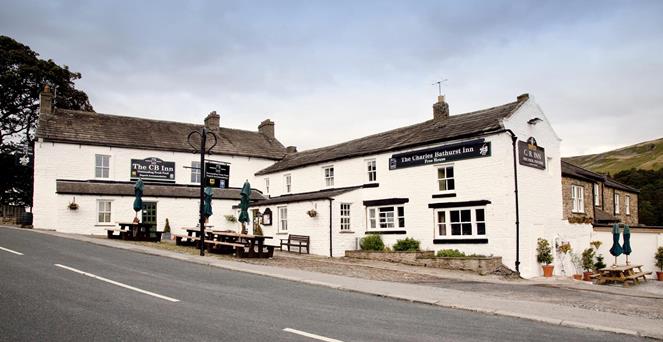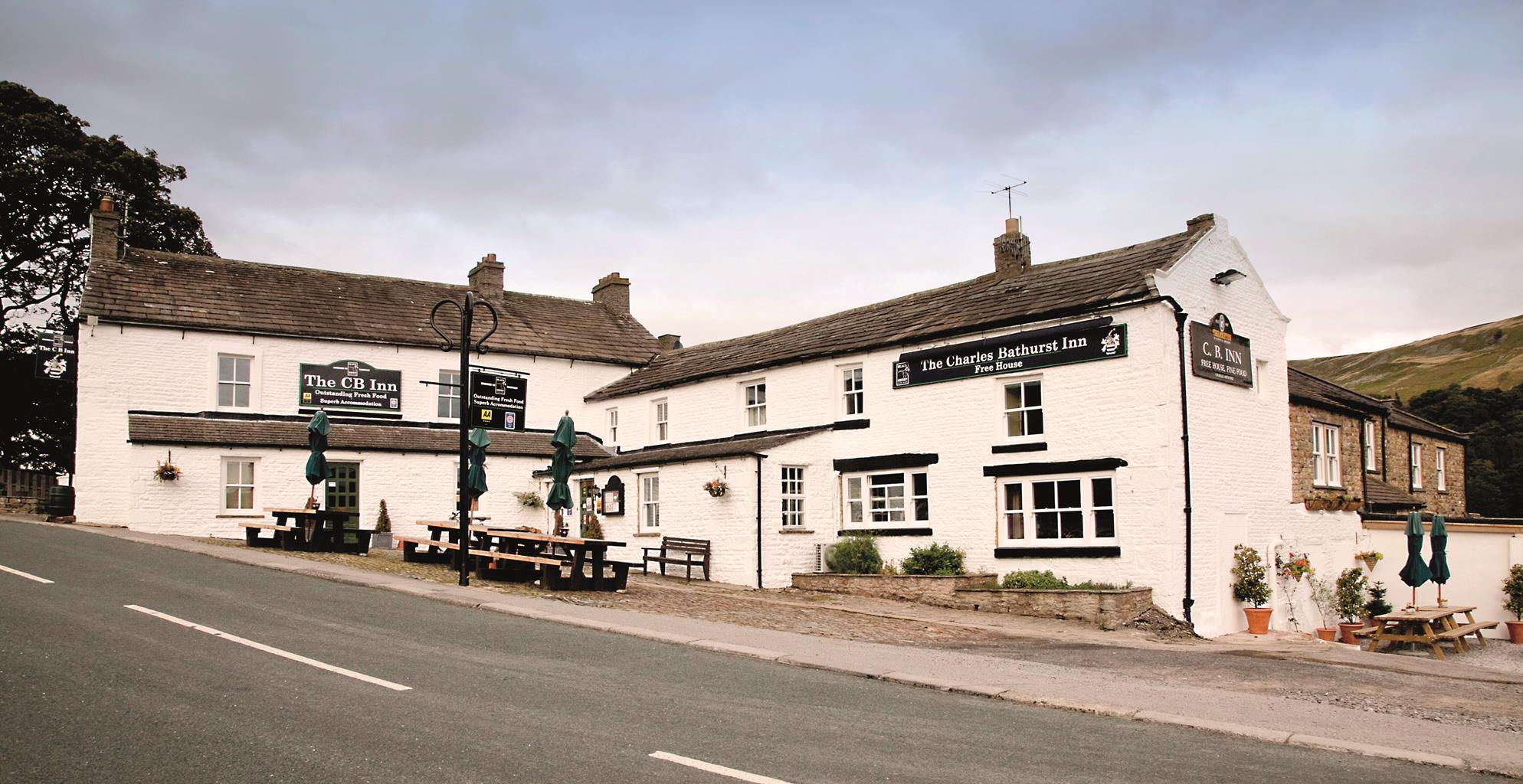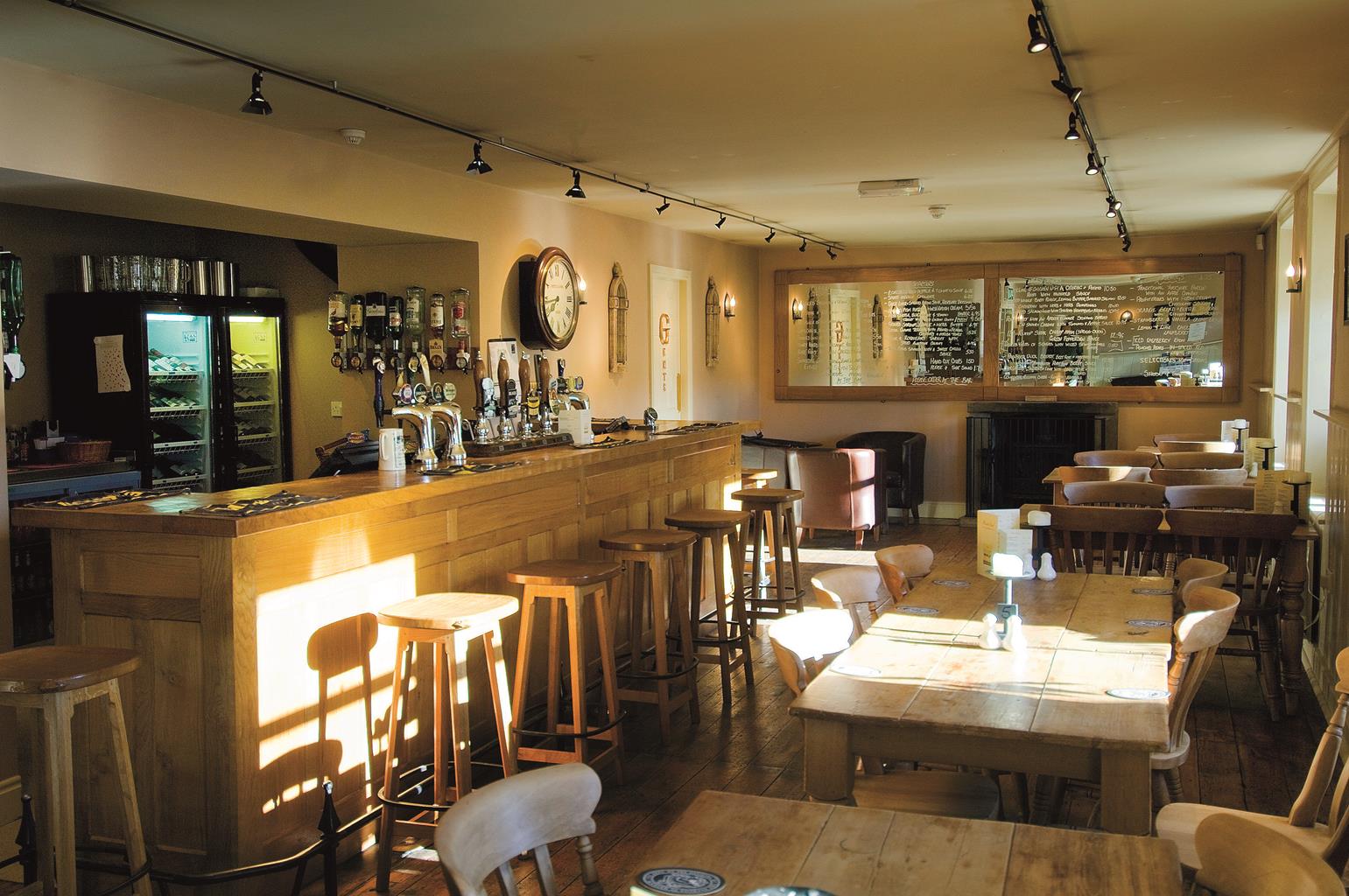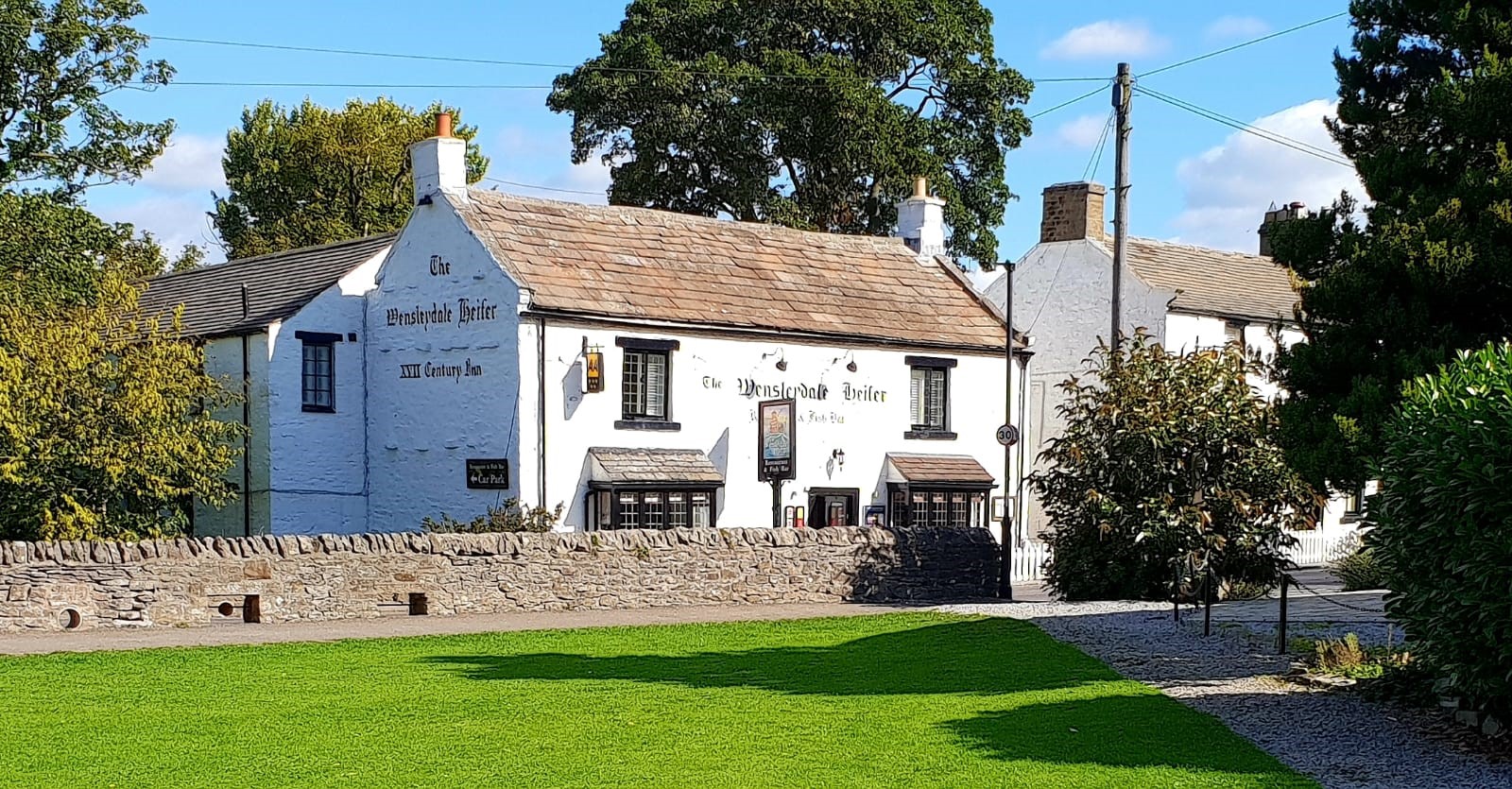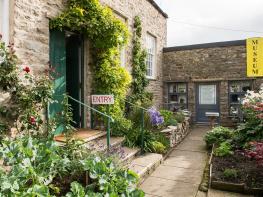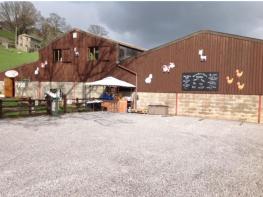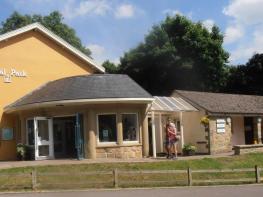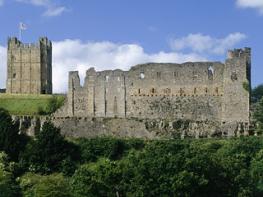Wraycroft Cottages is a family business established in 1965. The three linked cottages are in…
Reeth and Maiden Castle

From Reeth’s village green, a path crosses the Swale and climbs to an ancient hillfort.
3 miles (4.8kms)
About the walk
Reeth, the ‘capital’ of Swaledale, is first recorded in Saxon times, but the area has been populated for much longer, and this walk explores several aspects of its prehistory. The name Reeth is Old English in origin, meaning ‘the place by the stream’, though the present town centre is well above river level. Noted in the Domesday Book, Reeth gained a market charter in 1695, establishing its status as the principal centre for both Swaledale and adjacent Arkengarthdale. It grew strongly in the 18th century with the rise of the lead mining industry, of which many traces can still be seen on the fellsides, especially in Arkengarthdale. Population peaked in the first half of the 19th century, more than halving by the dawn of the 20th as the mines declined. However the value of farming, and especially of wool, ensured Reeth’s survival.
Prehistoric Swaledale
After crossing the Swale, the walk climbs through fields and onto open moor to reach Maiden Castle. This is usually described as Iron Age (after 750 BC), but there are no archaeological finds to confirm this definitively. However, it is similar in its general layout to other hill forts for which the Iron Age evidence is stronger.
Some authorities have questioned whether it is a fort, arguing that the rising slope directly to the south would weaken its defensive value. They suggest instead that it was primarily a ritual or religious site. One piece of evidence that may support this view is the long avenue, bounded by stones, leading into the main enclosure. Even today it has a ceremonial feel as you walk down the avenue to enter the main, roughly oval, enclosure with its impressive ditch and outer rampart. As no one really knows what it was for, you can let your imagination run free. One thing that is certain is that it commands a magnificent view over Swaledale.
On the way up to Maiden Castle you will pass the remains of a small round barrow (or bowl barrow), a burial mound probably of Bronze Age (before 750 BC) or even Neolithic origin.
The power of the flood
After descending from Maiden Castle, you return along the banks of the Swale. Though usually placid, this reach of the river can flood with exceptional speed: a rise of 10ft (3m) in 20 minutes has been observed. One factor may be the large areas of bare ground on the fellsides, a legacy of lead-mining days, which shed rainfall directly into the becks and rivers. Just downstream of the swing-bridge, floods have left an extensive area of bare stones and gravel, and the bridge itself is also a memorial to their power. Its predecessor, built in 1920, was destroyed by a flood in 2000.
Walk directions
Leave the village green at its southwest corner, passing the National Park Centre, and walk into Anvil Square. Bear right, past the Garden House, into a narrow, walled path signed ‘To the River’. Continue along a lane to a T-junction. Turn left and at the next junction turn right (signed ‘Doctor's Surgery’). After the medical centre the lane soon turns to a stony track with a flagged path alongside. Where the track ends, turn left down a narrower, stony path.
At the bottom go through a gate and bear right on a boardwalk. Continue through fields, through a gate and a gated stile, to the suspension bridge. Cross the bridge and continue almost straight ahead, following the sign to Harkerside. Go over a plank bridge (often redundant), then continue left of a clump of trees and up to a small stile.
Follow the direction of another fingerpost to a gate and continue through a gate up to meet a clear track as it goes through a gateway. Turn right along the track to farmyard (Harkerside Place), then turn left up the access track to a lane and turn right.
Where the wall on the left ends, go up through rushes to find a small path going diagonally up the slope towards a green knoll. From the knoll (the round barrow) you can see two parallel lines of stones, like collapsed walls, running through the heather. Follow a thin path between these to the bank and ditch enclosing Maiden Castle.
The path continues across the centre of the fort, but the best option is probably to follow the right-hand edge, above the ditch. At the far end, just below a tree, a path crosses the ditch. Follow this path, heading diagonally downhill to meet the lane again at its junction with another track.
Go left along the metalled lane, then follow the wall on the right downhill through rushes and ferns to a gate just right of a small barn. Go down the field, first right then back left to a gate into a farmyard. Go through a series of gates left of the farmhouse and its attached barn, and down a short, gated, walled track.
Turn right along a green terrace above the river until a small path slants down to a gate on the river bank. Follow the riverside path for about 0.5 miles (800m) until the river curves away left. Bear slightly right on a green track to a gate, then along the edge of a field until directly opposite the swingbridge. Turn left to recross the plank bridge and head to the suspension bridge. Cross over, and retrace the first stage of the walk back into Reeth.
Additional information
Tracks, moorland and farmland paths, sometimes indistinct through fields; several stiles
Riverside, farmland and elevated heather moorland
Lead required around livestock
OS Explorer OL30 Yorkshire Dales: North & Central
Around the green in Reeth (honesty box)
At upper end of green in Reeth
WALKING IN SAFETY
Read our tips to look after yourself and the environment when following this walk.
Find out more
Also in the area
About the area
Discover
Nearby stays
Restaurants and Pubs
Nearby experiences
Recommended things to do
Why choose Rated Trips?
Your trusted guide to rated places across the UK
The best coverage
Discover more than 15,000 professionally rated places to stay, eat and visit from across the UK and Ireland.
Quality assured
Choose a place to stay safe in the knowledge that it has been expertly assessed by trained assessors.
Plan your next trip
Search by location or the type of place you're visiting to find your next ideal holiday experience.
Travel inspiration
Read our articles, city guides and recommended things to do for inspiration. We're here to help you explore the UK.


